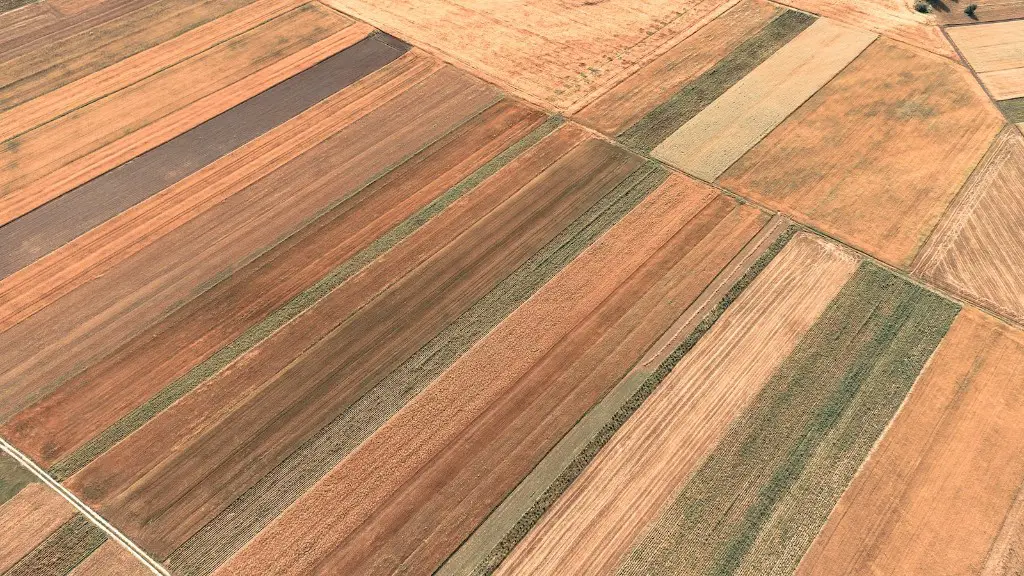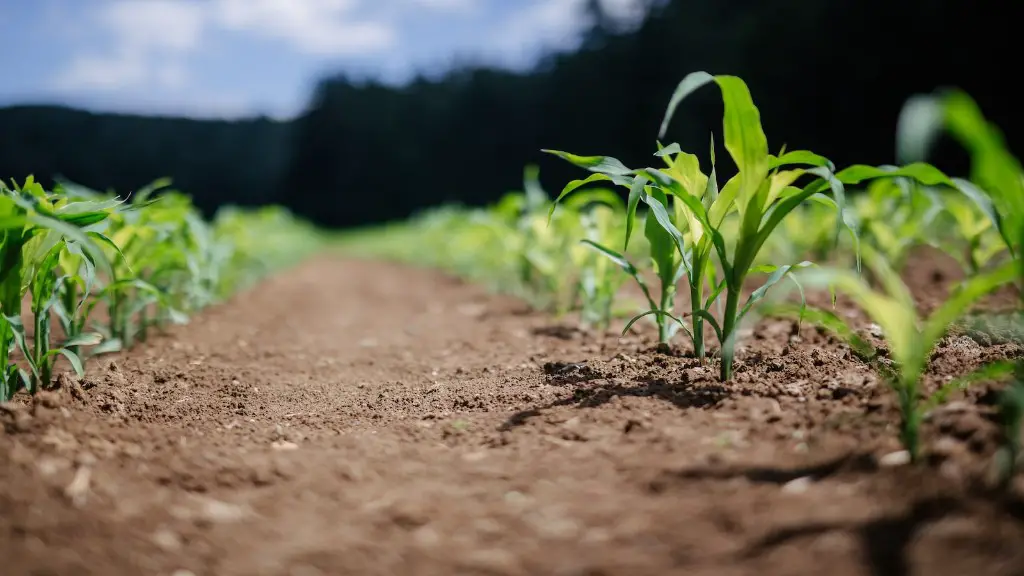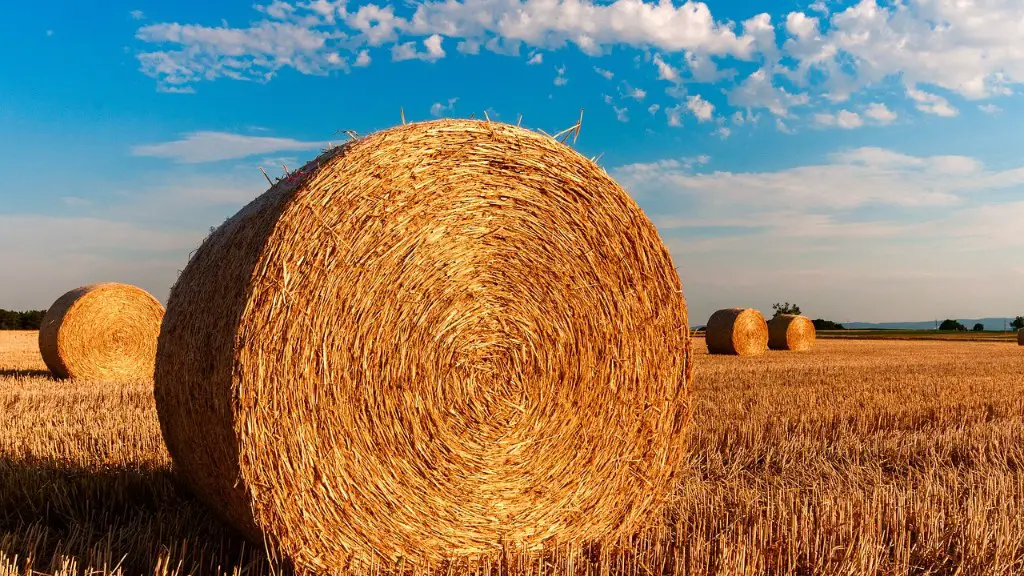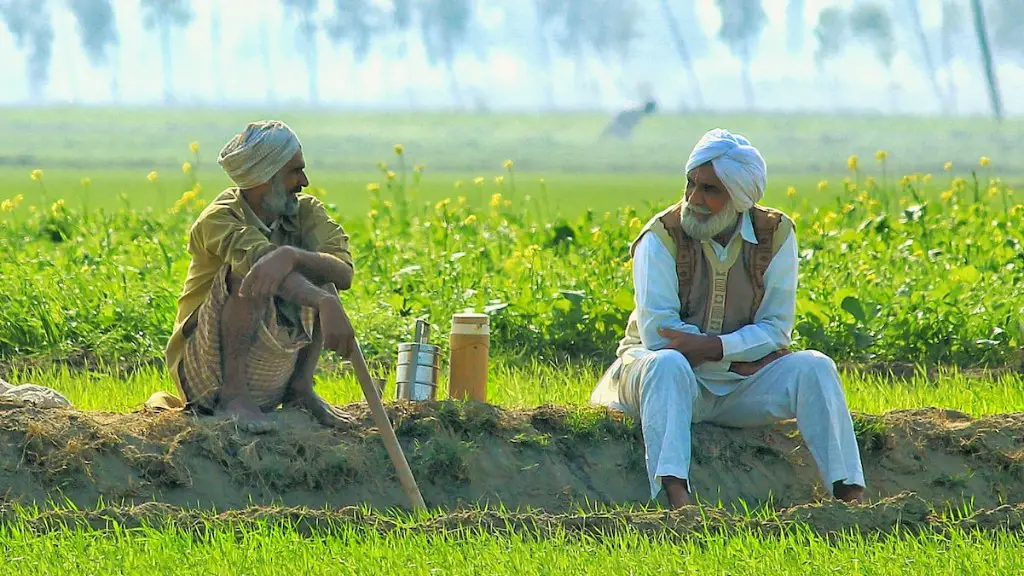A government subsidy in agriculture refers to financial or other forms of aid given to farmers or agricultural organisations by the government. Such subsidies are either provided on a temporary or permanent basis and are intended to support and benefit the farming industry. The subsidies are granted to the farmers in order to improve their production, develop new products and technologies, increase the efficiency of agricultural practices, strengthen the markets for agricultural products, and provide opportunities for greater economic growth in rural areas. It also provides farmers with an additional source of income and reduces the burden of costs on them.
Agricultural subsidies are also used to address environmental and resource concerns. For example, subsidies may be given to farmers to encourage the use of sustainable farming practices, such as the use of nutrient rich fertilisers, integrated pest management, and conservation tillage. They may also be used to reduce the amount of energy used in farm activities, to invest in renewable energy sources, and to reduce the amount of soil erosion or degradation of farmlands.
The main purpose of agricultural subsidies is to promote national food security and support farm livelihoods. They help to keep food prices stable, provide farmers with stability and income, and enable farmers to purchase or develop the necessary resources they need. They also are necessary to keep food costs from rising too quickly, and to ensure food remains available and affordable for consumers at all times.
In addition to these economic benefits, agricultural subsidies also help to protect the environment. Subsidies are used to encourage farmers to invest in more sustainable farming techniques and practices, such as eco-friendly pest control practices, efficient irrigation systems, and renewable energy sources. This helps to reduce pollution and carbon emissions, and to conserve natural resources.
The use of government subsidies in agriculture is a controversial issue. Some argue that they lead to inefficiencies in the agricultural sector by creating an atmosphere of overproduction and excess consumption. On the other hand, many argue that they are essential in order to support the livelihoods of farmers and ensure the availability of affordable food. It is safe to say that the debate over the utility of agricultural subsidies will continue for the foreseeable future.
History of Government Subsidies in Agriculture
Government subsidies in the agricultural sector have been around for centuries. In the United States, the first agricultural subsidies were created in the late 19th century in response to the economic turmoils of the time. These initial subsidies were designed to encourage farmers to produce more grain and cotton in order to supply the country with food and materials, as well as to maintain the ability to export these commodities and help the economy.
Today, it is estimated that more than half of the world’s annual agricultural production is supported by government subsidies. In the United States alone, the US government spends tens of billions of dollars each year to support farming, typically through direct payments to farmers, such as those made by the US Department of Agriculture’s (USDA) Farm Service Agency and commonly referred to as ‘subsidy payments’.
In recent years, there has been a move towards ‘subsidy reform’. This includes the introduction of policies that are intended to reduce government subsidies, or at least to make them more targeted and effective. This is being driven mainly by the increasing evidence of the negative impacts of subsidies, such as the negative environmental effects of overproduction, dependency on government subsidies, and the marginalisation of small holder farmers.
Most recently, the United Nations and World Bank have launched their own initiatives to promote subsidy reform. The UN’s Sustainable Development Goal of Ending Hunger and Achieving Food Security is focused on improving the lives of smallholder farmers and ensuring that subsidies are used in a responsible and effective way.
Types of Government Subsidies in Agriculture
Government subsidies in agriculture come in many forms. The most common form is direct payments, which are payments made directly to farmers by the government or other public entities. These payments are typically intended to cover costs associated with producing or purchasing agricultural products, such as fertiliser, animal feed, seed, fuel, or equipment.
In addition to direct payments, the government can provide financial support to farmers in the form of loans, loan guarantees, and insurance. These programs allow farmers to access borrowing or loan funds at a lower cost than if they were to get financing from a private entity. In some cases, the government may even insure against crop losses due to natural disasters or market fluctuations.
Governments may also provide subsidies to encourage certain behavior. For example, a government may incentivize farmers to adopt sustainable farming practices, such as integrated pest management, conservation tillage, and use of organic fertilisers. In some cases, governments may even provide subsidies for new technologies, such as precision farming, that can help to reduce environmental impacts and increase the efficiency of agricultural production.
Finally, governments may also provide subsidies to encourage the development of new products or markets, such as agroforestry or organic agriculture. Such subsidies are typically used to cover the cost of research, development, and marketing associated with these activities.
Impacts of Government Subsidies in Agriculture
Government subsidies in agriculture have many positive and negative impacts. On the positive side, they can help farmers to access financing and resources that they may otherwise not have access to. They can also improve food security, while ensuring prices remain affordable for consumers. In addition, subsidies can also help farmers to transition towards more sustainable farming practices and promote the use of renewable and energy efficient technologies.
However, some argue that government subsidies in the agricultural sector are largely ineffective, and can have a number of negative impacts. In some cases, subsidies can lead to overproduction and create distortions in the markets for agricultural products. This in turn can lead to an increase in the amount of pollution, increased soil erosion, and a depletion of natural resources.
In addition, there is also a concern that subsidies can lead to the marginalisation of smallholder farmers. This is because subsidies tend to benefit larger farms more than small farms, and can in some cases lead to an increase in land concentration and the inequality of resource distribution.
Finally, there are also concerns that subsidies have resulted in a dependency on government support. In some cases, farmers may become overly reliant on subsidies, which in turn can lead to a lack of innovation and opportunities for economic growth.
Controversies Surrounding Government Subsidies in Agriculture
As mentioned earlier, the use of government subsidies in agriculture is a controversial issue. While some argue that subsidies are necessary in order to ensure food security and support farmers’ livelihoods, others argue that they are ineffective and create distortions in the markets. This has led to an ongoing debate over the utility of subsidies in the agricultural sector.
In recent years, some governments have begun to experiment with subsidy reform, typically focusing on reducing the amount of government spending or making subsidies more targeted and effective. However, many of these attempts have been unsuccessful, as governments have failed to take into account the complexity of the agricultural sector and the difficulties of implementing effective reform.
In addition, the fairness of the current system of agricultural subsidies has also been questioned. Many argue that subsidies are not fairly distributed and benefit larger farm operators more than smallholder farmers. This has led to calls for a more equitable system of agricultural subsidies, as well as for more targeted policies that can support smallholder farmers and promote a more equitable distribution of resources.
International Perspectives on Government Subsidies in Agriculture
Government subsidies are a common feature of the agricultural sector in many countries around the world. In the United States, for example, the US government spends more than $20bn a year in subsidies in agriculture, which is largely aimed at supporting farmers through direct payments and loan programs.
In the European Union, agricultural subsidies are primarily aimed at ensuring food security and supporting farmers with income-loss due to market fluctuations. These subsidies include direct payments, income support schemes, and support to rural development projects.
In other parts of the world, such as China and India, agricultural subsidies are largely aimed at improving production levels, increasing food availability, and reducing rural poverty. In these countries, the subsidies are typically focused on providing low interest loans and grants, as well as supporting agricultural research and development.
Across the world, governments have tended to focus on using subsidies to promote agriculture and support rural communities. However, as mentioned earlier, there is now growing evidence that subsidies can have a number of negative impacts, and should be used more responsibly.
Summary
Government subsidies in agriculture are a financial or other form of aid given to farmers or agricultural organisations by the government in order to improve their production, develop new products and technologies, increase the efficiency of agricultural practices, strengthen markets for agricultural products, and provide opportunities for greater economic growth in rural areas. While these subsidies can provide numerous economic and environmental benefits, they are also associated with a number of negative impacts, including overproduction and resource depletion. In recent years, there has been a move towards ‘subsidy reform’ in order to address these concerns and make subsidies more targeted and effective. Across the world, different countries have different approaches to providing subsidies in the agricultural sector, with most focusing on promoting food security and supporting farmer livelihoods. However, they all face the same challenge of ensuring that the subsidies they provide are used in a responsible and effective manner.





